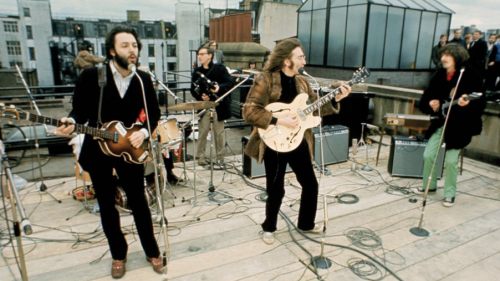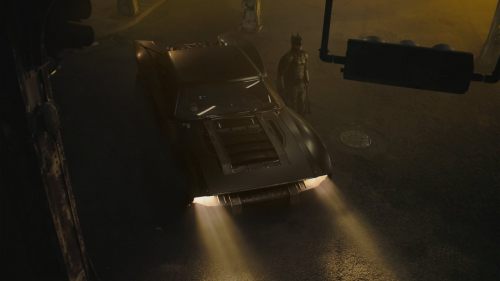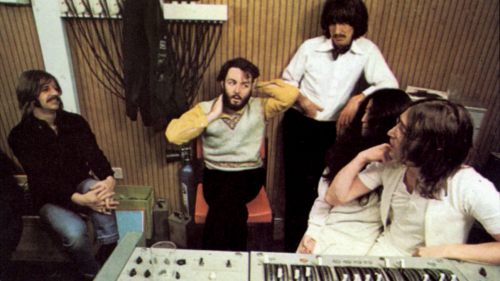THEY SHALL NOT GROW OLD Review: In Living Color
Peter Jackson’s They Shall Not Grow Old is, without a doubt, the most ambitious and jaw-droppingly successful film restoration project ever undertaken.
Working with celluloid that’s scratched, heavily-duped, under- and overexposed, warped, shrunken, degraded, and in a range of wobbly frame rates from 12 to 19, Jackson’s Park Road Post team has produced near-pristine-looking images that would never have been thought possible before. A before-and-after comparison in the 30-minute making-of doc that followed the screening drew audience-wide gasps. The restoration isn’t perfect - the familiar artifacts introduced by frame interpolation are frequently visible - but when you consider the source material, it’s legitimately amazing. The film is bookended by sequences of the original, unaltered footage, and the moment when the frame opens up and comes to life in colour and 3D and even reconstructed sound is the closest modern audiences will likely get to the equivalent transition in The Wizard Of Oz.
Luckily, the film is successful as far more than just a technical exercise.
World War One is so far removed from today’s world - it ended one hundred years ago this year - that it’s easy to feel distanced from it. Jackson’s restoration, though, enhances that old footage to the point where he can, and does, zoom in on the faces of the soldiers involved. It’s hard to describe just how moving it is, looking back in time and suddenly seeing long-gone soldiers as human beings, with personalities, hopes, fears, and struggles just like our own. Jackson smartly hones in on that aspect of the footage: this is a film about common British soldiers (and thanks to the nature of this particular war, nearly any soldier) and their everyday experiences.
We get insight into those experiences in a variety of ways. Audio interviews with veterans make up nearly the entirety of the soundtrack; they’re not narrating footage of themselves exactly, but the clips create an audio collage that matches the visual one. We see and hear about the excitement of going to war; the struggles once they got there; the violence, disease, and suffering that filled the trenches; and the unceasing fear that comes from being shelled day and night. Though many soldiers put on a brave face for the camera, their underlying nerves become all the more palpable as the film goes on. One shot of a man leaving a medical tent to return to the front, hands shaking and eyes hollow, will haunt me for some time. By the end of the film, every stare stretches a thousand yards.
Accordingly, what's most compelling is the film’s denouement. After a five-year war, nearly ten million soldiers were killed, and the ones who survived didn’t come out the same. Many were mere children when they joined up, lying about their age to join what seemed like a great adventure, and when they returned - if they returned - they weren’t the same, having spent formative years witnessing death and destruction. The difficulties faced by veterans upon return are painted as vividly here as those faced back in the trenches. It echoes the end of Jackson’s Lord of the Rings: you can never truly go home again. Or rather, given Jackson’s long-standing interest in this subject material, The Lord of the Rings echoes the war.
Sadly, the decision of Jackson and company to use only archival material (film footage, audio interviews, and scans of contemporary posters, magazines, and photographs) inevitably results in a few issues. There’s just not much footage available of the more action-packed side of the war, meaning creative decisions have been made to reconstruct scenes out of the material available; while those decisions are effective, the absence of footage to match the veterans’ vivid descriptions is keenly felt. And with an absence of B-roll, the film’s pace turns monotonous at times, the constantly rolling audio clips rarely giving way to purely visual storytelling. Still, one admires Jackson's dedication to his vision.
Jackson dedicated They Shall Not Grow Old to his grandfather, but just as the faces in the film are representational of the war entire, it could be dedicated to relatives of half the globe. Certainly, nearly anyone in Europe or the British Commonwealth has family members who fought in the war. I did: among them, a distant great-great-uncle from the Scottish side of my family, who fell in love with a German girl pre-war and ended up fighting on the German side. Hell of a story.
Even without a family connection to the Great War, it’d be hard to watch They Shall Not Grow Old and not empathise with these men simply as human beings. On one hand, there’ll never be a war like World War One again, but on the other, every war is the same: just people fighting people. A truly transformative experiment and a truly human take on history, They Shall Not Grow Old brings the dead back to life to tell their stories - lest we forget.



